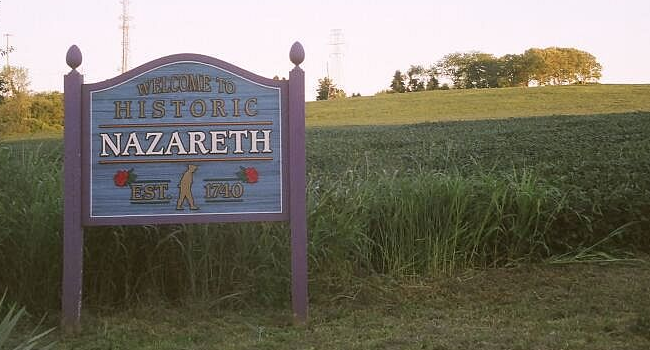The Bath Historical Architecture Review Board held a meeting on Wednesday, September 20 to discuss the Bath Historic District’s nomination for the National Register of Historic Places by the Pennsylvania Historic Preservation Board.
Division Manager Elizabeth Rairigh of the Pennsylvania State Historic Preservation Office provided a presentation on the possibility of Bath Historic District becoming a nationally registered district.
Rairigh explained that the Pa. State Historic Preservation Office is the official historic preservation agency for the commonwealth of Pennsylvania, and it is a bureau within the Pa. Historical and Museum Commission.
The National Register of Historic Places was established in 1966 to help coordinate and support public and private efforts to identify, evaluate, and protect historic and archeological resources, is maintained by the National Park Service and includes properties of national, state, and local significance.
To be listed, historic resources must be at least 50 years old, retain integrity and meet one of four criteria, which includes association with significant events, association with people significant to the past, architecture/work of a master or archaeology/provide information about the past, whereas local significance is the most listed. Additionally, the seven aspects of integrity include location, design, setting, association, materials, workmanship and feeling.
The Bath Historic District is being recognized for its significance for commerce and architecture, with the associated period of significance being 1799-1930.
Some of the reasons to list things in the National Register that Rairigh pointed out are recognition, promotion of community and economic development and tourism, consideration, applying for grants and tax credits and because nationally registered properties tend to hold their value.
Rairigh shared that the National Register does not restrict a property owner’s ability to alter, manage or dispose of a property, require properties to be maintained, repaired or restored, require properties to be open to the public or invoke local zoning or landmark designation.
Listing with the National Register provides recognition of a property’s historic importance and assures review of federally funded or permitted projects that might affect the historic character of the property. When a property is listed in the National Register, certain federal investment tax credits for rehabilitation and other provisions many apply.
Consideration in planning for federal, federally-licensed and federally-assisted projects includes Section 106 of the National Historic Preservation Act of 1966, which requires that federal agencies allow the Advisory Council on Historic Preservation an opportunity to comment on all projects affecting historic properties listed. Some listings also qualify for federal grants for historic preservation.
Additionally, listings also receive eligibility for certain tax provisions. Owners of properties listed in the National Register may be eligible for a 20% investment tax credit for the certified rehabilitation of income-producing certified historic structures such as commercial, industrial or rental residential buildings. Federal tax deductions are also available for charitable contributions for conservation purposes of partial interest in historically important land areas or structures.
However, owner/occupants of properties do not qualify for the tax credit, but they can apply tax credits to the part of their property that is a business, and owner’s that rent out their properties wholly qualify for the tax credit.
There are also certain conditions that permit nonprofits to be eligible for the tax credit, but it is a sophisticated process. Therefore, the National Register opens up the opportunity for grants, which is often what historic churches use to pay for building renovations and restorations.
It was noted that not all of the properties within Bath Historic District are included in this review process. The Historic Map of 1878 is roughly the same boundaries being proposed, which is outlined in red on the site plan, whereas excluded properties are highlighted in blue.

The Pa. Historic Preservation Board meeting is scheduled for Wednesday, October 11 at 9:30 a.m. in the Forest Room at the Keystone Building, located at 400 North Street in Harrisburg. The meeting is open to the public and individuals that plan to attend should contact Rairigh.
Written comments, letters of support and objections are also welcomed prior to the board meeting and will be read by the National Park Service since they are the deciding factor to list the properties in the National Register. They will then have 40 days from the formal board meeting on October 11 to make their decision.
If any residents have questions or concerns, or would like to submit correspondence for review, Elizabeth Rairigh can be reached at erairigh@pa.gov or 717-705-4035.









